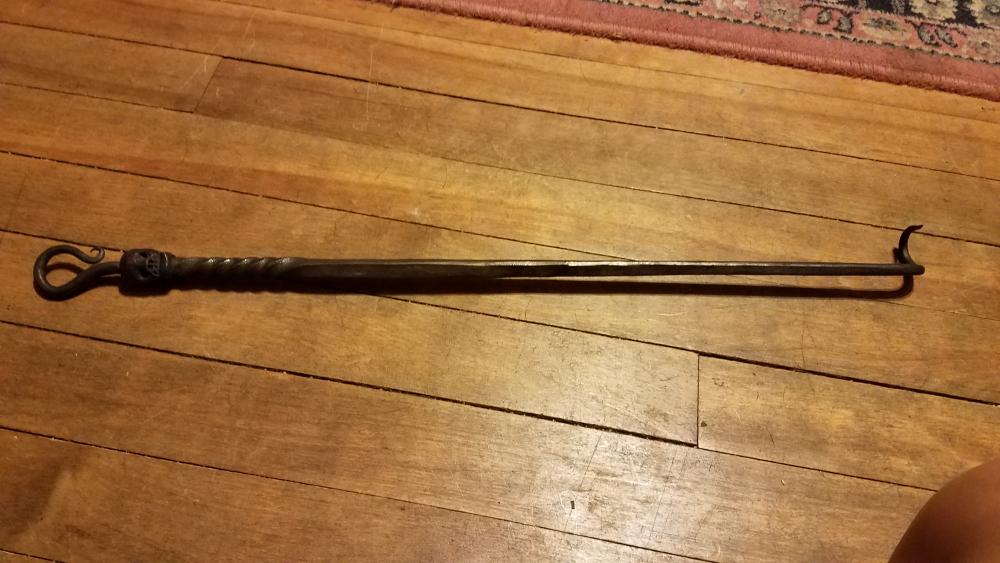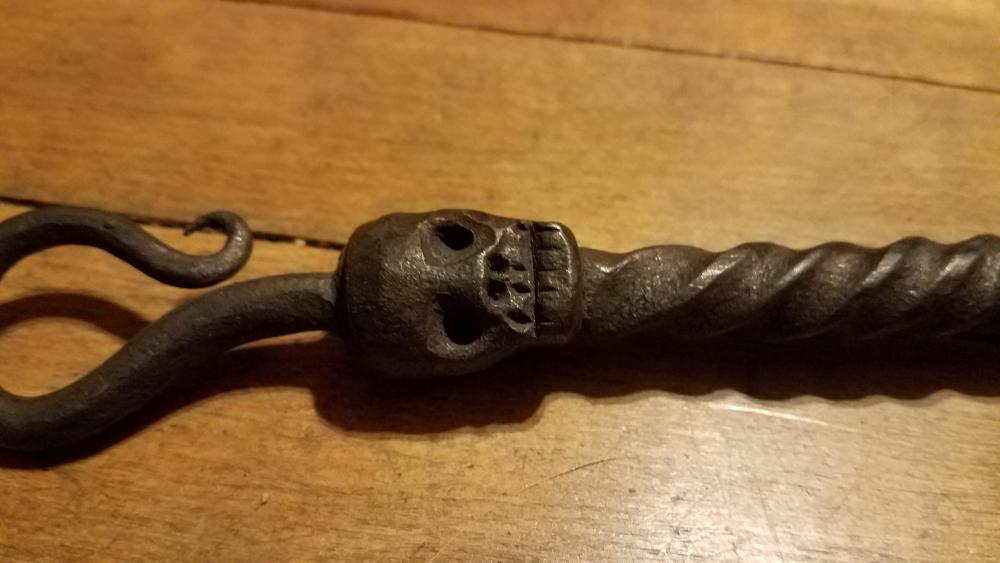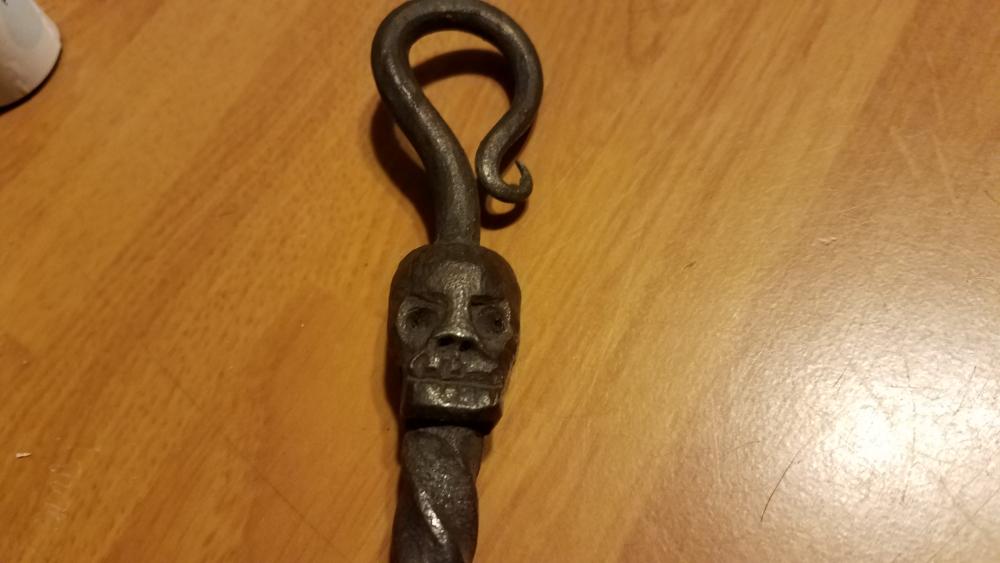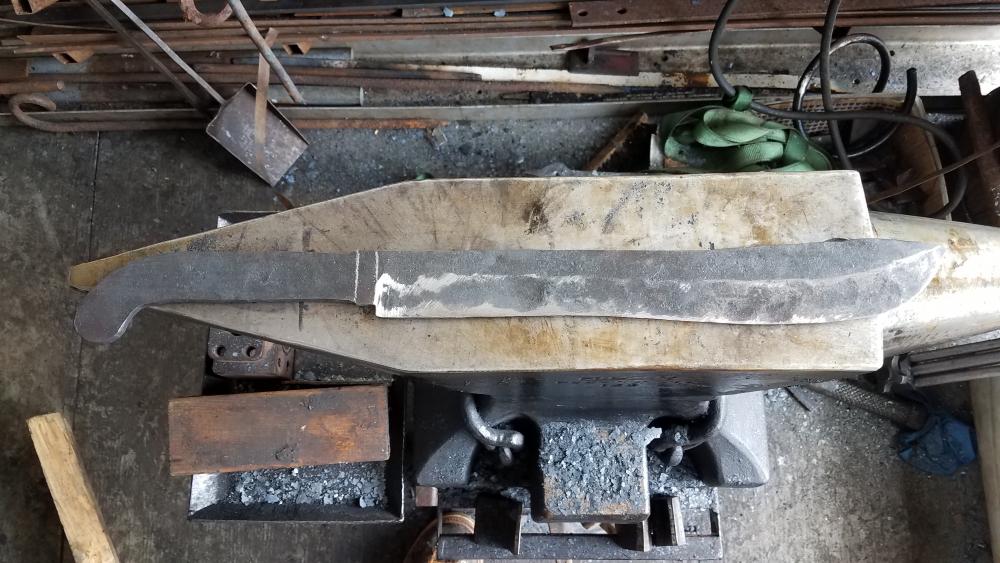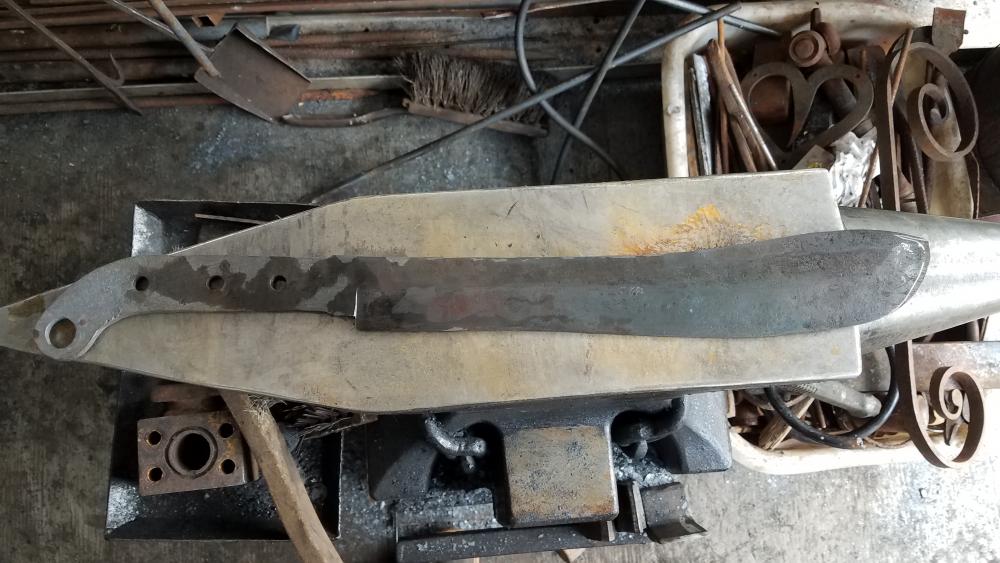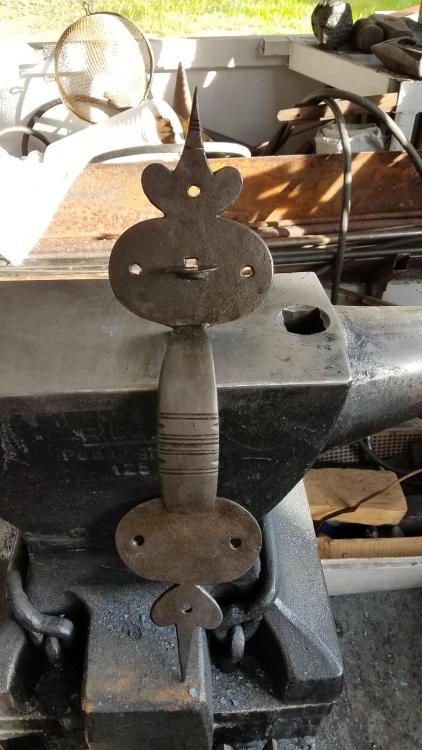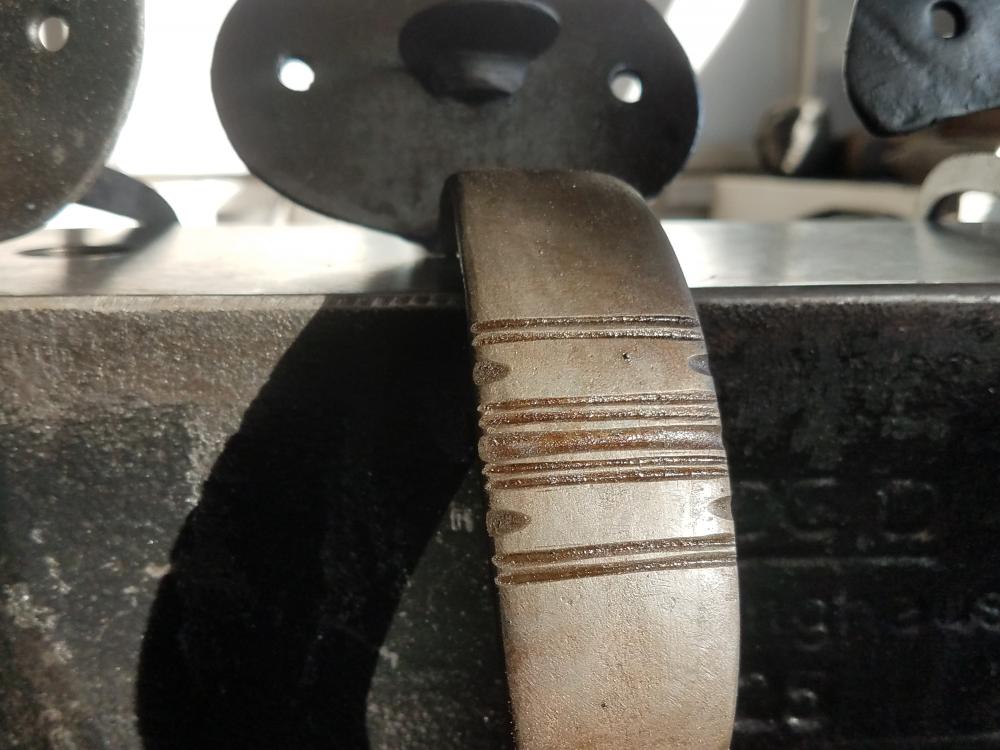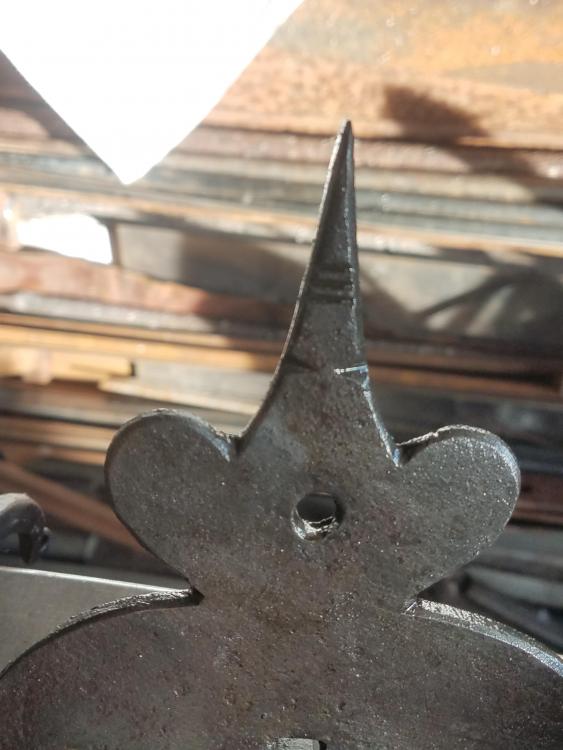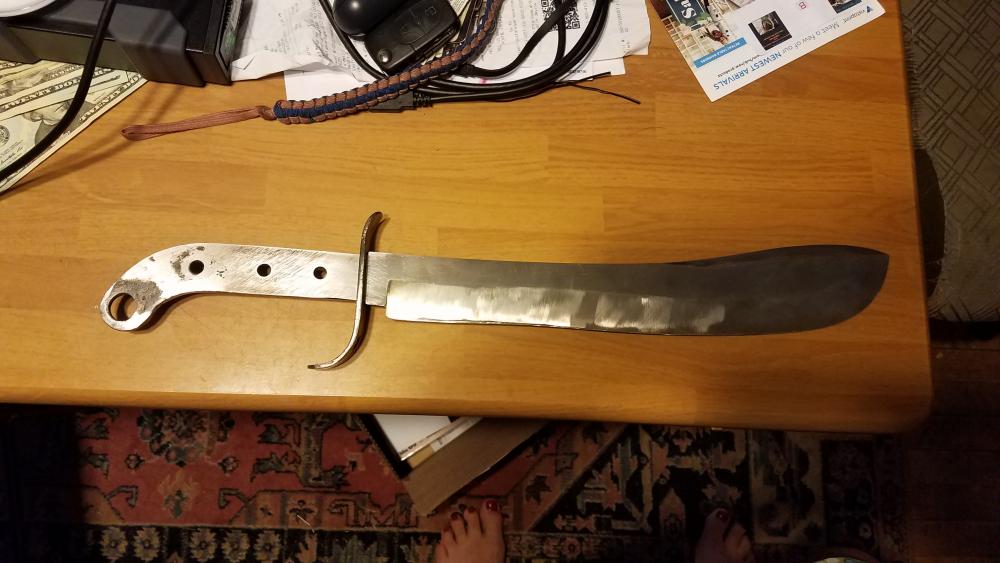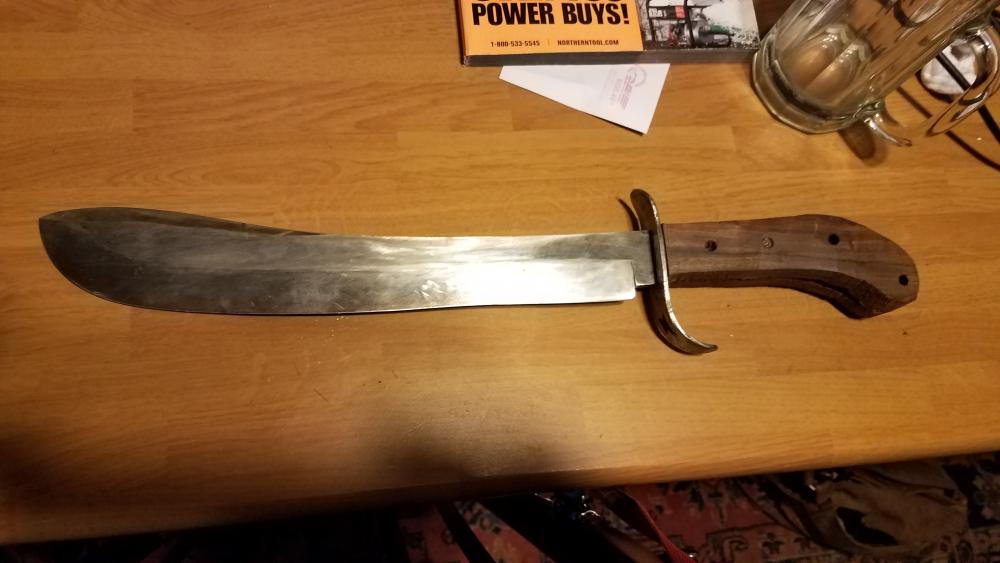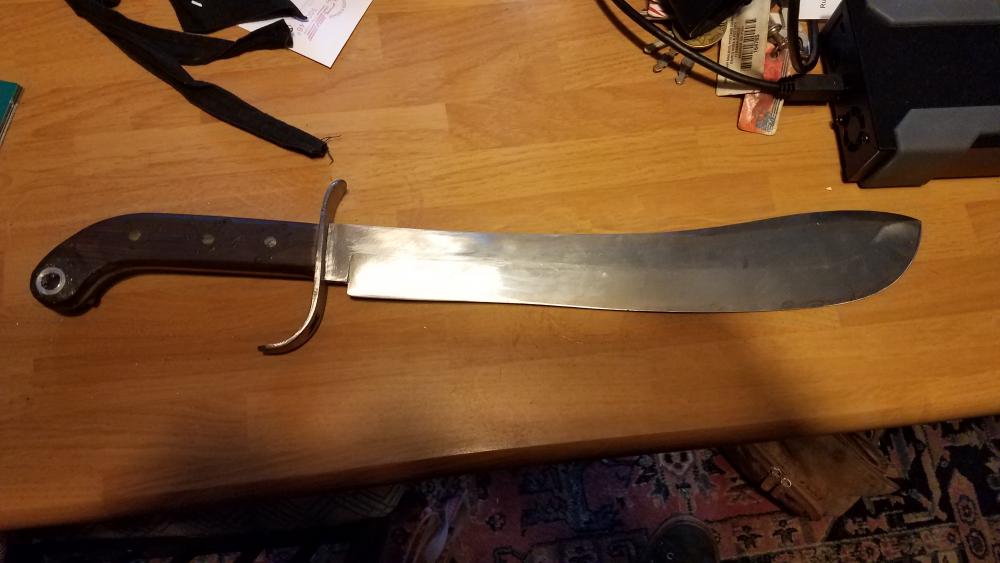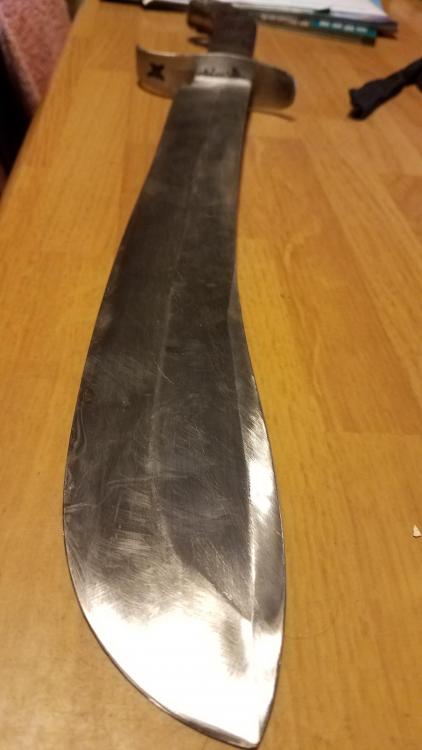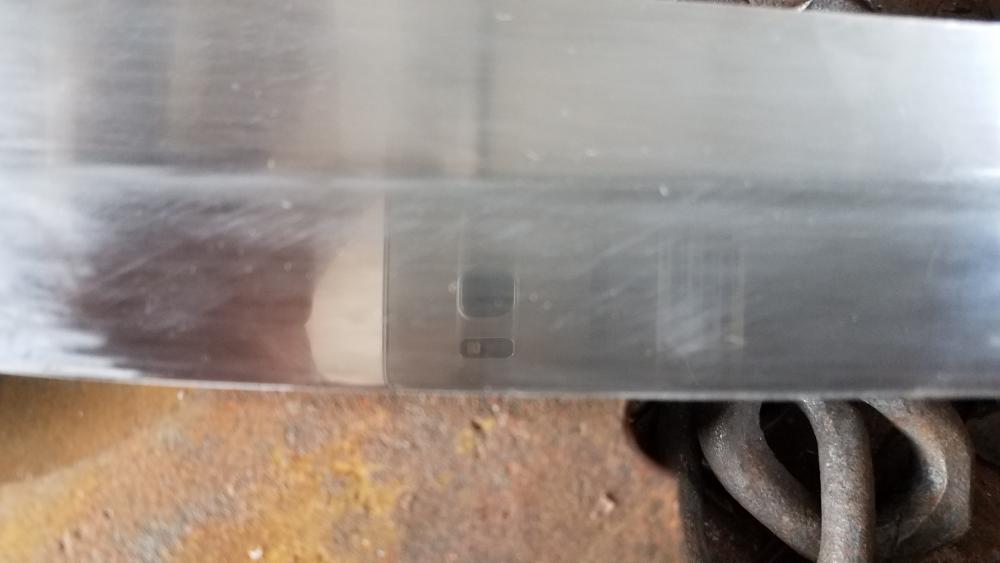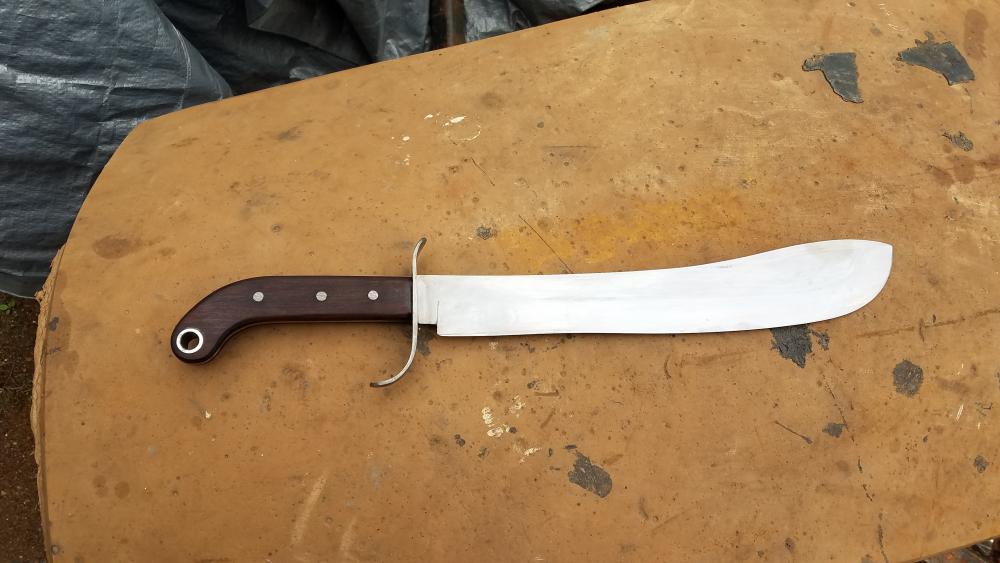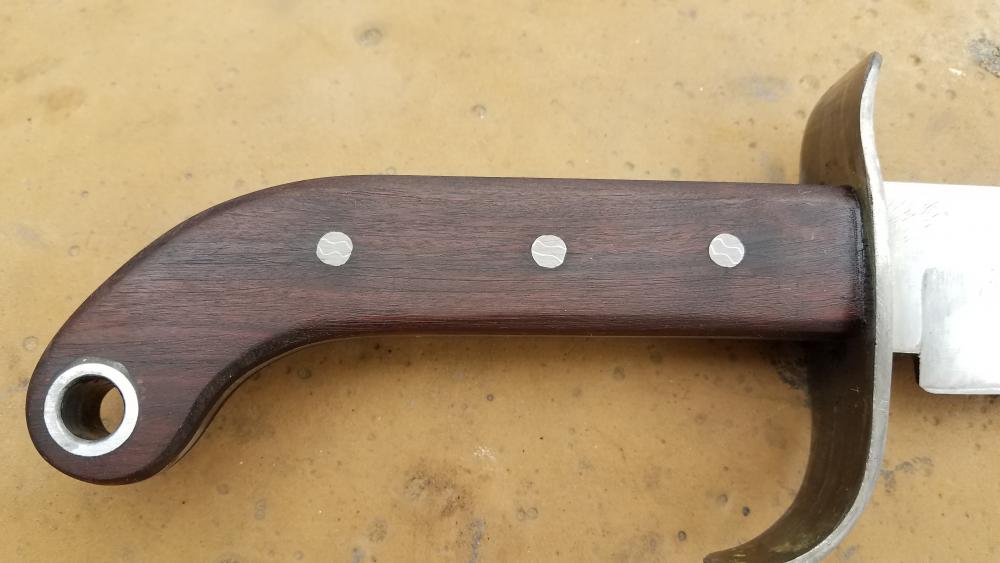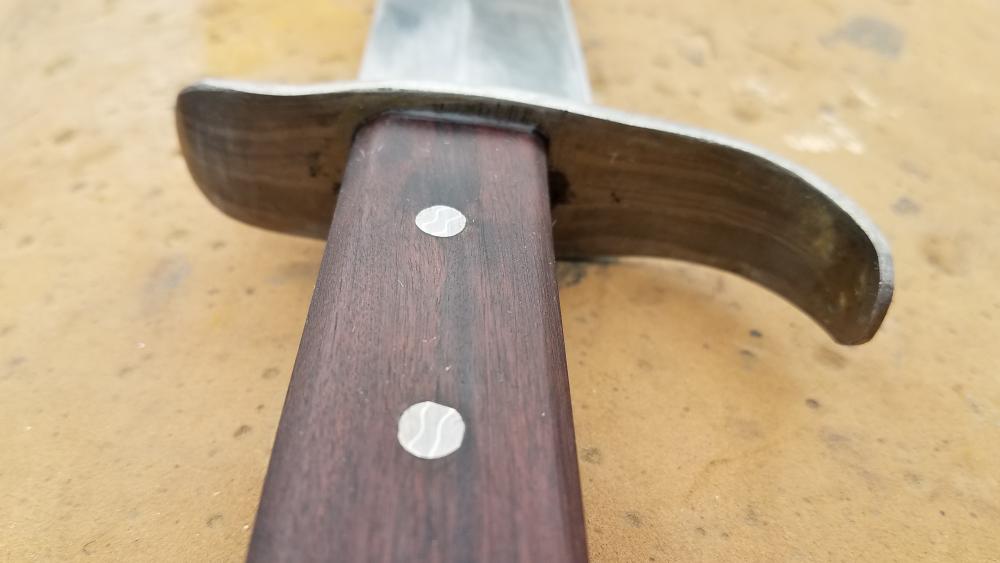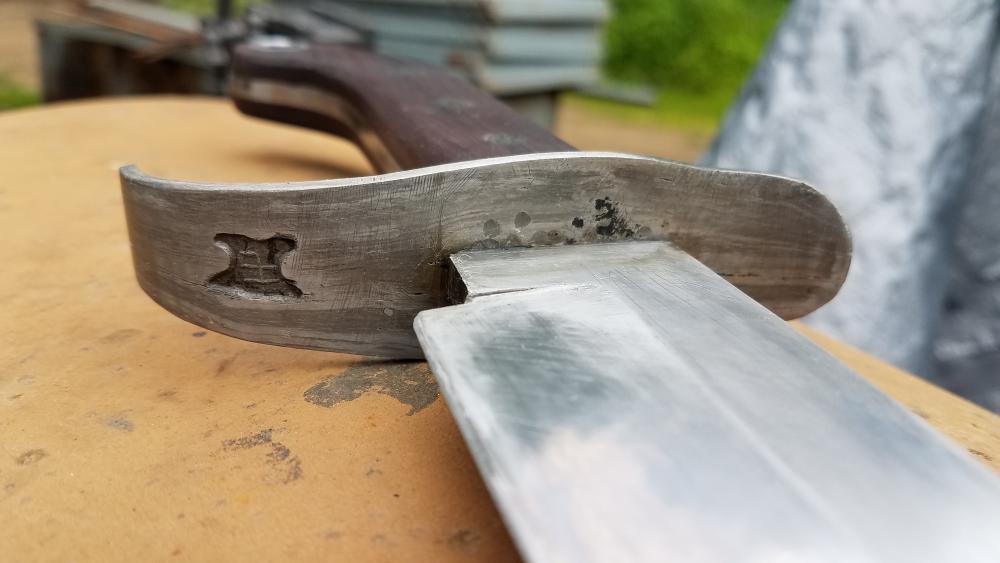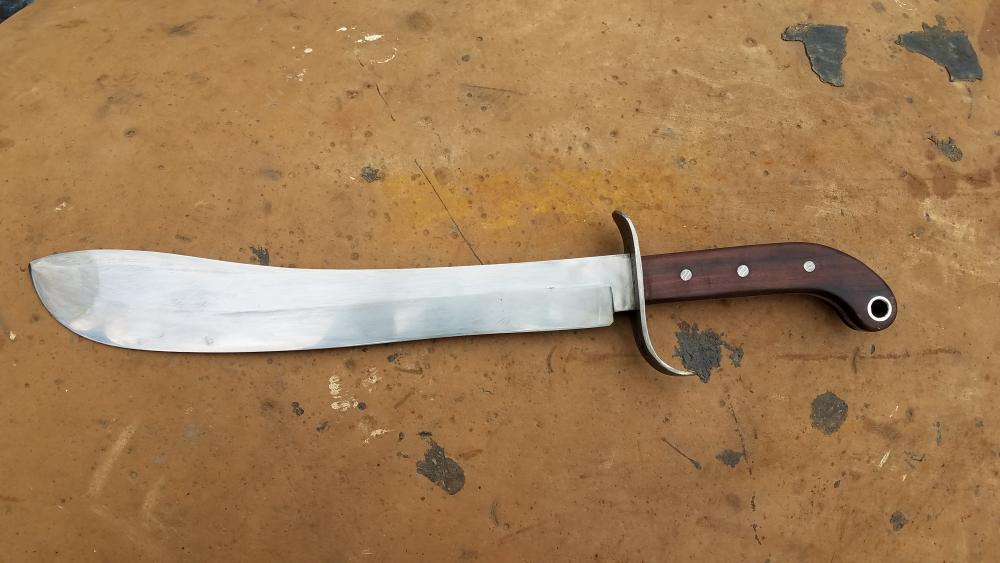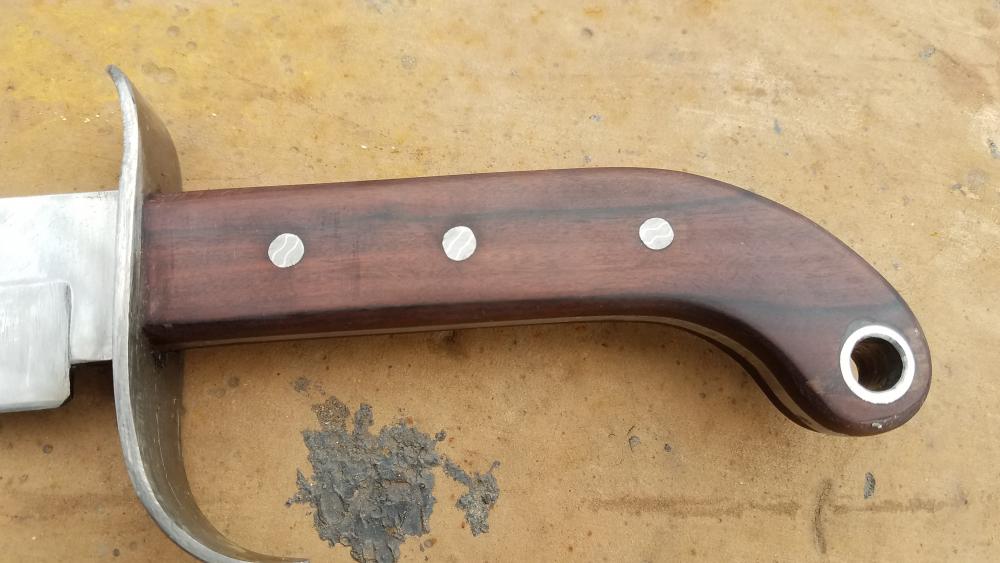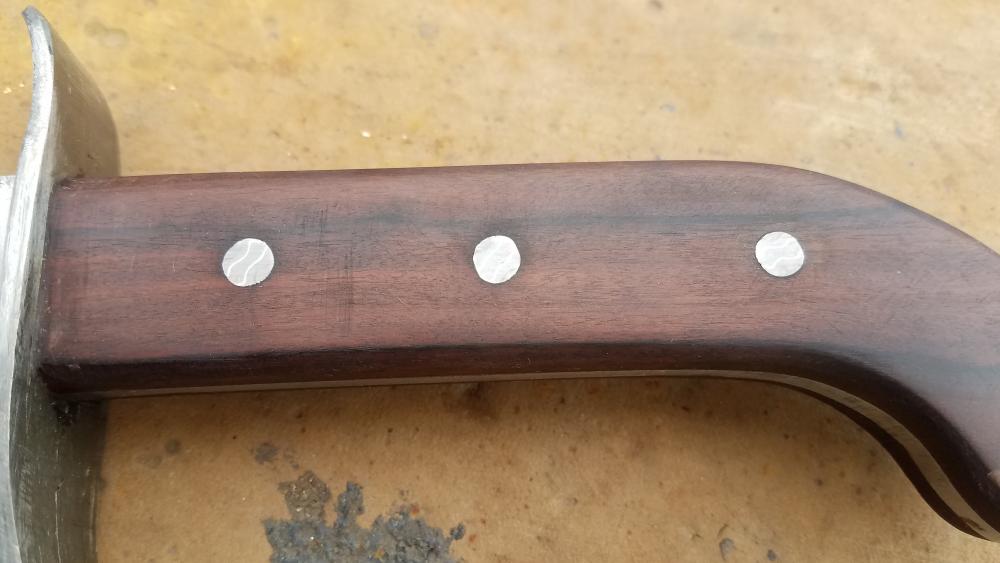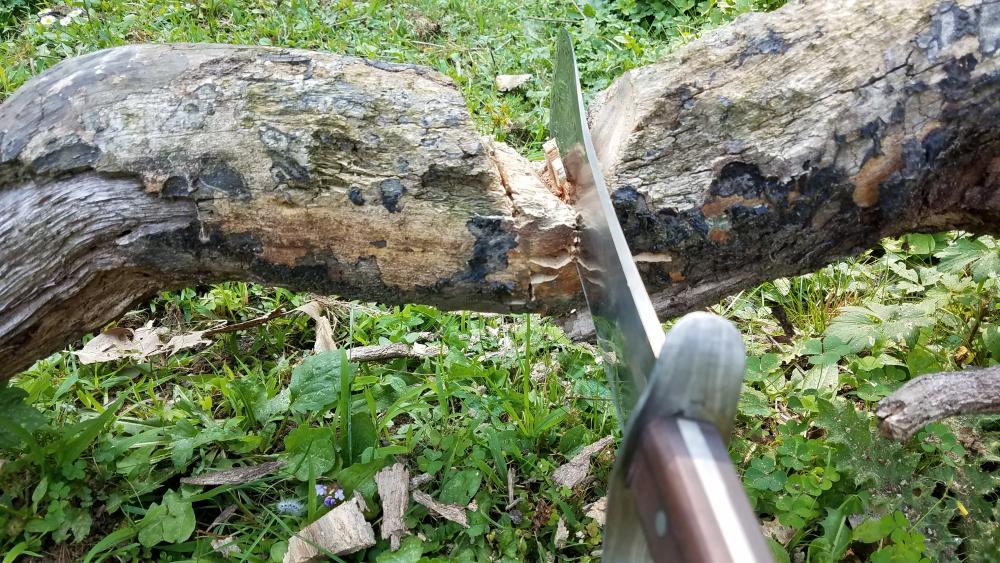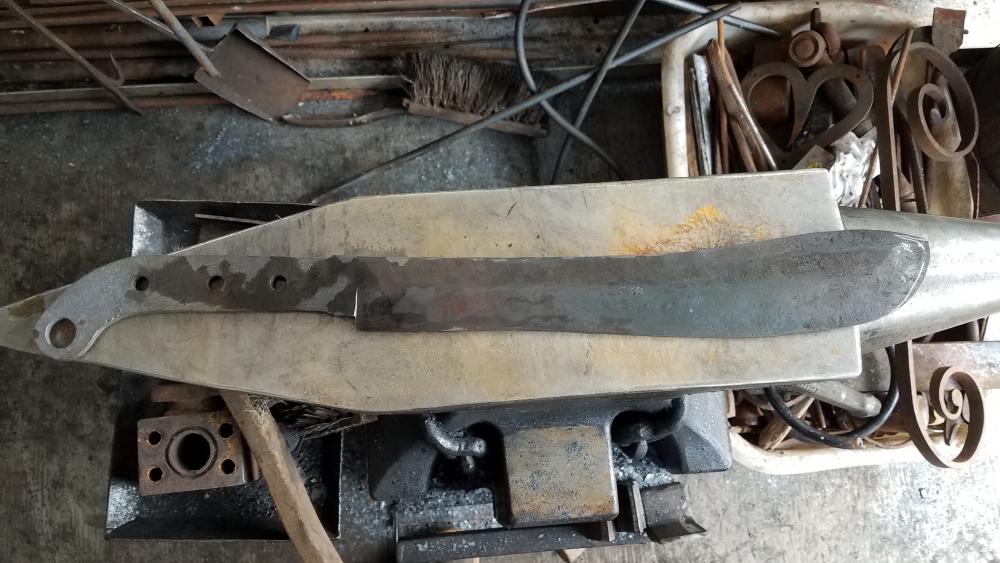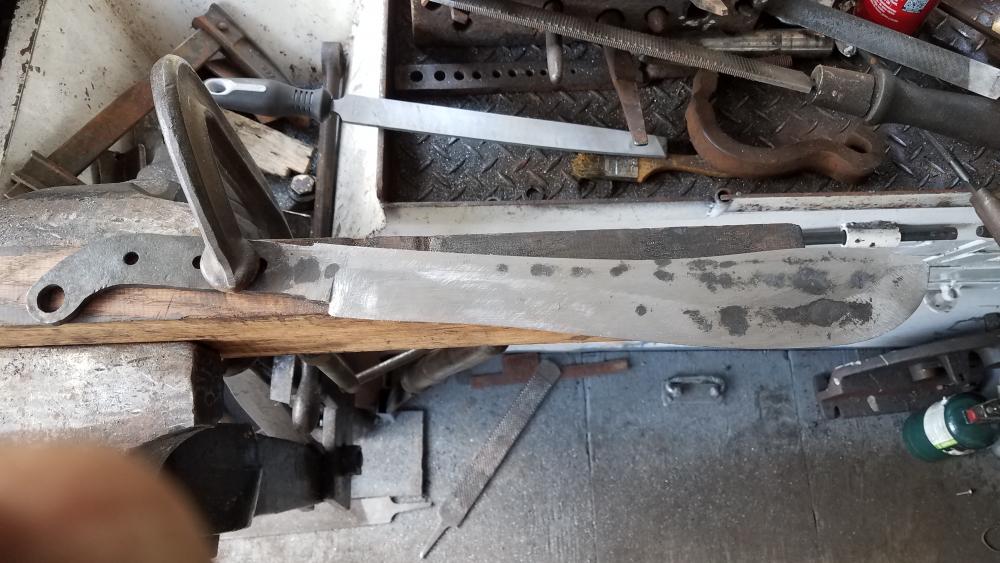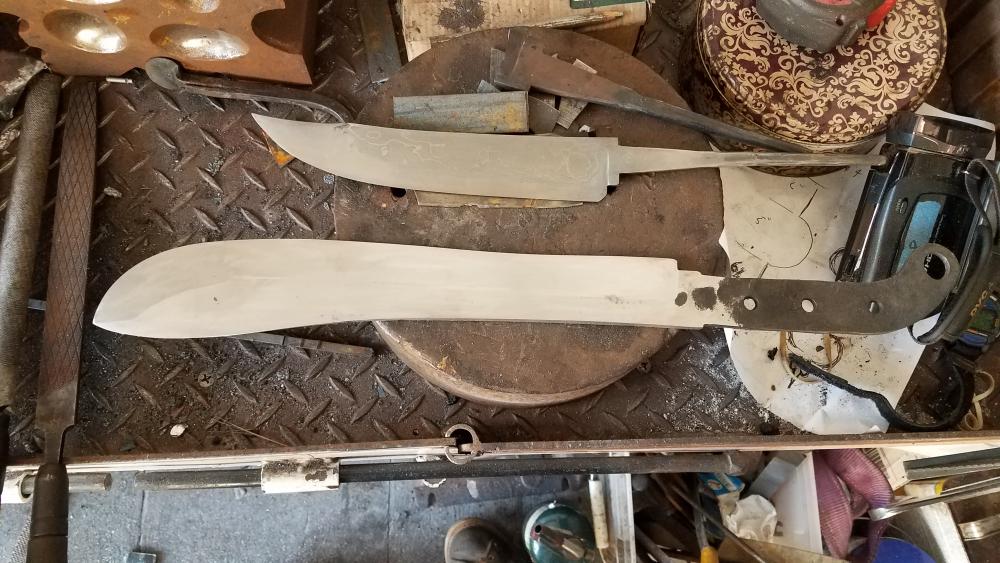-
Posts
5,780 -
Joined
-
Last visited
Content Type
Profiles
Forums
Articles
Gallery
Downloads
Events
Everything posted by jlpservicesinc
-
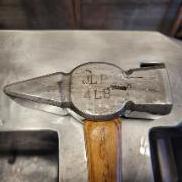
Traditional blackmsithing.
jlpservicesinc replied to EJRailRoadTrack's topic in Blacksmithing, General Discussion
I think there is an ideal or a vision a person has both of costume and of building neither of which I adhere to nor was saying to be traditional.. because they dress the garb or work in a vintage shop means little.. My distinction is in forging skills and items made as well as tools used... progressive use of modern machinery, modern being limited to power hammers (drop, helve, steam, water, beam, human, tec)or hydraulic hammers since both have been used as far back as possible.. Again it becomes the skill set even more so than the finished product.. -
did you do a notch and break test? or just a file test? Some of the steels just don't get as hard as a true 5160 or 52100 so the file feels sticky.. But it is still hard.. If you do a notch and break test it will for sure show you the error of the ways.. Also some of the springs are decarbed on the outside so there is less likely hood of a spring failure from fracturing.. Flatten out 5", notch every half inch, take a full yellow heat at the end and have your last notch just before transition temperature (1500F or less) then harden the whole 5".. give it a file test, and then snap off each segment and look to see if there is a nice clean, small grain in the broken off part.. You'll notice that at the high heat sections 2400 down to about 1800 the grain gets smaller with the lower temps.. Post back results.
-

Ghoul steak turner
jlpservicesinc replied to jlpservicesinc's topic in Blacksmithing, General Discussion
Please don't take this the wrong way but I avoid jigs like the plague.. Or what I should say is While jigs can speed up production and make a consistent product, they also can mask a skill set or lack of a skill set and can hinder further skill development. I found that the only time I use jigs is when doing many scrolls or table legs or the like where to sit and bend and wrench every bend just becomes to time consuming to make any money.. One of the largest compliments I can get is making a piece or10 by hand and having someone say it looks factory made because of the precision between or against each other.. And of course I am a big promoter of taking ones time when it comes to forging.. Speed comes with practice and as a smith gets better so does the work and speed.. -

Ghoul steak turner
jlpservicesinc replied to jlpservicesinc's topic in Blacksmithing, General Discussion
Forge work or forge jig work? -

Traditional blackmsithing.
jlpservicesinc replied to EJRailRoadTrack's topic in Blacksmithing, General Discussion
So you bid every job? .If so you still have an hourly rate based on previous experience. There is a difference between a bid, quote, or retail cost.. This back ground information is what allows for you to make an educated bid as well as how closely you cut the margins, and what will be the overall profit.., (bid competing against other bids or quote (projected or estimated costs based on like objects or experiences and not against other bids).. usually materials are not part of shop rate.. Materials get billed + business percentage (IE handling or transaction fee if you will, added on top of net (shop purchase (wholesale))cost passed onto purchaser, retailer, end user.. as an billed example 150lbs of 1018 @ 4.00 per pound= 600.00 Invoiced price to business at wholesale was only 3.00 per pound. Or 450.00 mind you this is only and example.. and if bidding this kind of job depending in how badly you want the work will depend on what you figure others will charge in competing bids. For a business not to have an hourly rate or at least a ball park figure on how much they need to make per hour or per job unless that business is cash rich with an over abundance of work, would soon be out of business.. Shop rate ideally is based on what it will take to account for your personal well being (can/are you able to make a decent living, retirement, vacation, health insurances, all expenses at the home as well as at the shop... and any employees as well as equipment.. A decent living depends on location, retired with steady main income, etc etc.. I used to always quote jobs and those jobs were based on knowing how long it took to make an item like it everything was custom, Then misc stuff like bolts and such would be added in as well as materials and even coal... Bidding a job can become a job all its own as nearly everything has to be accounted for or else you can lose your shirt. Flat rate is based on much more than just time and materials if taking everything that costs you, daily, monthly and even yearly and also looking into the future (in case of).. -

Ghoul steak turner
jlpservicesinc replied to jlpservicesinc's topic in Blacksmithing, General Discussion
Yes I was there last fall.. first day I showed up and made a few forge tools and left.. 2nd day I ended up giving a lesson on knife tip forging which changed into making a whole knife.. Well have fun an be sure to say hi.. -

Ghoul steak turner
jlpservicesinc replied to jlpservicesinc's topic in Blacksmithing, General Discussion
The Chopper knife i have in another thread.. You going to the fall meet? I'd be happy to help you on the journey there.. I'll be helping out at the Green coal tent, friday and saturday.. Have any questions or want help with a skill.. Hit me up and if you do it ahead of time I'll bring the needed materials.. It was fun.. Took about 30minutes the hard way.. The easy way would maybe break it down to 15 or 20minutes with the correct tooling.. I'd eventually like to get a Short maybe 1hr or 1.5hr how to group going.. People could request what they want to make and if it can be made in a timely fashion we could get 4 work stations going and have a learning time.. -

Traditional blackmsithing.
jlpservicesinc replied to EJRailRoadTrack's topic in Blacksmithing, General Discussion
Yes, while I didn't have a chance to watch the video.. Your description is correct.. If you upset the area to be punched ahead of time there is nearly no distortion or cupping where punched if using a square section like in making a german, french, swedish or Hofi style hammer.. And in fact if you wanted to make a really long cheek you can forge the fullering around both the face and peen without having a cold shut at either end of the eye.. Thus less dressing out of the eye with a burr or file.. Frosty the reason why I mentioned the fact that once you produce more the pay rate goes does is simply the fact of shop with a flat rate.. I learned years ago that if I don't charge accordingly on pieces I started to forge very quickly I lost money. So just because I can now forge an item in 30minutes vs the 45minutes it used to take.. I still charge the same for it and the shop rate technically goes up vs down.. As a hobbyist that has basically no overhead and does it for fun vs putting food on the table or IE a little extra pocket change I totally agree.. And again.. Most smiths turned towards technology vs away as they themselves recognized the faster or easier the job the more money as long as they charged correctly and lets face it.. a ton of them turned to auto repair as well as machinist type work as the transition took place.. If you can re hoop a tire 15minutes faster than a competing blacksmith and not needing 2 helpers to do it (arc welding) and can charge nearly the same amount and the job is just as good or better who or which place would you choose? -

Traditional blackmsithing.
jlpservicesinc replied to EJRailRoadTrack's topic in Blacksmithing, General Discussion
Yes it is.. but one has to realize there are places that modern welding and gas welding were part of the tradition.. In other words if working for a given time frame you use the same tools and finish to that level.. Having a very diverse skill set lets you explore other facets and implement these skills to good merit.. As a liken.. I often use the Shakers of the USA as examples of amazing works done with modern equipment.. They believed "Hearts and hands to God".. Meaning do you work and finish it as if you were giving it to God.. So if for a given time frame they used arc welding and if reproducing to a 100% level than the same processes should be used.. He sure did use arc welding and gas welding.. A lot of his creations would have been nearly impossible to complete without these modern tools. So if repairing his work. Ideally the methods he employed should be used as well as the correct materials. If one studies and is proficient in forging and some or most of the classically learned metal working skill sets just looking at the piece will usually show you how it was made.. Lets face it.. One could mill or machine a thumblatch on a CNC milling machine, remove it and then fix it to look hand made.. Or with the newer laser measuring devices could create a CAM file and the latch would be pretty much near 100% finished.. Throw it into a tumbler for awhile, and who would know the difference other than the person who made it.. Unless someone was proficient in making thumblatches and knows exactly what to look for and even on completely hand forged then filed finished you can see how it unfolded.. Reason why I speak on this is because I myself had to reverse engineer the making of traditional hardware.. Mind you there are 1000's of ways of doing something but the basics apply to everyone and even though I am self taught and have never been with another smith while making a latch, yet since I came out of retirement I did have a chance to work with another smith on a latch and he does it the same way.. Coincidence or is simply because of how the tools have to be used to get the desired results.. How can this be though I never worked with anybody else.. Same on nearly everything I have ever made.. The only thing that i have seen that has changed since I had retired is the way hammers, certain axes and such are slot punched.. The only time I would slot punch a hammer eye was on a ball peen or engineers hammer where the cheeks needed the extra material.. Axes were always preforged for the weld (fullered), steel strip welded onto the pole before bending around and eye welded, steel inserted and welded up.. Slot punching does offer less distortion in the eye but it also changes the way the eye geometry is shaped naturally while round punched.. Again just a different way and as pointed out on another thread some eyes were straight walled with no taper at top or bottom.. At some point I'll make a video How to on round punching an eye but these days I have no time.. Anyhow, applying the correct methods for a given time frame is part of the process is making reproductions or fixing others works which have been damaged.. One could argue it's all pointless as there is no such thing as original past the day it's made on.. Nothing can be reproduced.. Where was the first soft coal forge used vs charcoal? -

Ghoul steak turner
jlpservicesinc replied to jlpservicesinc's topic in Blacksmithing, General Discussion
Thats a good idea.. Also a wood texture for the twisted section to look like a pole the head is sitting on.. -

Ghoul steak turner
jlpservicesinc replied to jlpservicesinc's topic in Blacksmithing, General Discussion
I agree .. It was a toss up between ghoul or shrunken head.. -
Forged this out of 1/2 round as a demo at the Hardwick Fair.. I upset the head part to 1" and it cleaned up about 7/8" , 20" long
-

Traditional blackmsithing.
jlpservicesinc replied to EJRailRoadTrack's topic in Blacksmithing, General Discussion
I haven not been able to find a good book on wrought iron bloomeries.. Despite years of looking the only information I found was a small blurb about the wrought iron industries of the UK and they used an oil fired furnace to make the wrought iron or at least that is what I remember.. Not sure how you remember all the different books but you are amazing.. Please pass along more info on the wrought iron production process of puddled wrought if you have some... All of the information I have found always deal with making steel vs hand puddled wrought.. -------------------------------------------------------------------------------------------------------- Traditional to me : means basic hammer, forge, anvil and vise.. This definition is very loose but for the most part I don't use any electric tools.. (simply because I don't like them) except for a power hammer or hydraulic press. These are wonderful tool and electric, air or hydraulic all are wonderful time savers.. Here is the kicker.. As these tools came along and spend up the process.. You actually make less money per item as it takes less time to make.. So while you charge less you can produce more therefore you end up working harder for less.. I am a traditional trade smith based on 1700-1930's or even into the 40's maybe 50's but a trade smith.. If it's made from iron, or steel and you need X, y or z.. I had the ability to forge what was needed to the correct size and use.. and then within short order harden and temper to said.. With that also being said. I am a purist meaning I prefer to use the most basic of tools to get the job done.. While I will use any tool needed to accomplish the job in a timely fashion it's comes to convenience and what the time is worth to me.. Is the job going to pay me the for the extra time hand forging a product vs sledger or power hammer or hand finished vs grinder. etc.. One thing I will not use for any item I make which would be consider a traditional forging is arc welding or even gas welding.. Soldering or silver soldering was used and I will use it on certain items.. Keys, locks, slip hinges, self closers, etc, etc.. And will forge braze screw boxes and the like. Sadly I did demo's today but didn't take one picture of the table of wares.. It had everything from chain, axes, swords, knives, latches, hinges, forks, spoons, trivets, shovels.. thumblatches.. etc, etc.. -

Complete hand forged and polished chopper
jlpservicesinc replied to jlpservicesinc's topic in Knife Making
Thanks Thomas.. I will check out these titles.. -

Complete hand forged and polished chopper
jlpservicesinc replied to jlpservicesinc's topic in Knife Making
No problem. When time allows. Thanks -

Complete hand forged and polished chopper
jlpservicesinc replied to jlpservicesinc's topic in Knife Making
1600 to present.. You have a great flavor in reads.. Just looking at expanding my reference knowledge with different designs.. -
Looking forwards to the fall meet.. Dale sorry you won't be around.. I'll be there Friday and Saturday.. Will be helping out over at the green coal tent both days..
-

Complete hand forged and polished chopper
jlpservicesinc replied to jlpservicesinc's topic in Knife Making
Thomas, what you have up the sleeve as for a good book of pictorial knives and swords.. :??? -

Complete hand forged and polished chopper
jlpservicesinc replied to jlpservicesinc's topic in Knife Making
I will be at Goshen for the fall NEB meet, Fri and Saturday and helping out at the green coal tent. -

Complete hand forged and polished chopper
jlpservicesinc replied to jlpservicesinc's topic in Knife Making
It was based on a drawing my bestie did back in the 70s. He had a little more curve and sweep in the blade and the thicker top portion of the blade had a lions mane carving.. I figured it would make a great chopper but really I wanted to work on my preform forging.. I cut 2" off the end as it was going to be to long (balance was off) and reforged the tip area to get to a length of 13.5 and 21 overall.. Lou. It really isn't that much labor to make a knife.. Or time for that matter.. Took me less than 1.5hrs to take a piece of 3/8X2.5X9" leaf spring and end up with a workable blade forged by hand. A power hammer would have cut the time nearly in half.. A good striker would have done the same.. A blade shape like this becomes a time eater for hand polishing as you have to address the curvature and keep the edge centered. If the blade had a straight cutting edge vs the inset ricasso it would have expedited polishing.. Also the redesign made it a little tougher as it rounded out the tip even more.. I picked probably one the the hardest types of knives for me to make and polish out just starting back out. I love to forge them, but hate all the finish work.. Personally I'd rather make a Katana or a Tanto as they are designed for hand work.. As is a lot of the older designed blades where the cutting edge is a consistent bevel.. I made a lot of rookie mistakes but it's part of the process.. The fit on the guard was decent but not as snug as I like so I peened the wrong side and you can see this in the guard.. Instead of peening the best way is to use a special punch for the purpose which I have.. I just forgot about it.. I also forgot to peen it on the back side.. LOL instead of the front.. If you have a knife grinder or hand polish a straight blade is always the easiest.. With the curved cutting edge it takes just that much longer.. I'll be making a few more in the up coming months.. This was just the beginning. -

Deerfield Thumblatch
jlpservicesinc replied to jlpservicesinc's topic in Blacksmithing, General Discussion
-
Here is a recent Chopper I made.. It has been hand forged, filed, hardened, tempered, sanded, polished.. A guard made from Wrought iron and pins made from some damascus I forged out of some 1085, 1018, wrought iron and 15n20.. The grommet was made out of 6000 series Alum on the metal lathe out of a time savings.. Not my finest work but this is just a ramping up to get all the skills back up to speed.. Here's the pictures.. First full sized knife made in many years..
-
Depending on the flux it can be applied as low as dark cherry red.
-

New JABOD box of dirt forge (picture heavy)
jlpservicesinc replied to JHCC's topic in JABOD - Just A Box Of Dirt
The packed clinker and soot is a good alternative as well..

